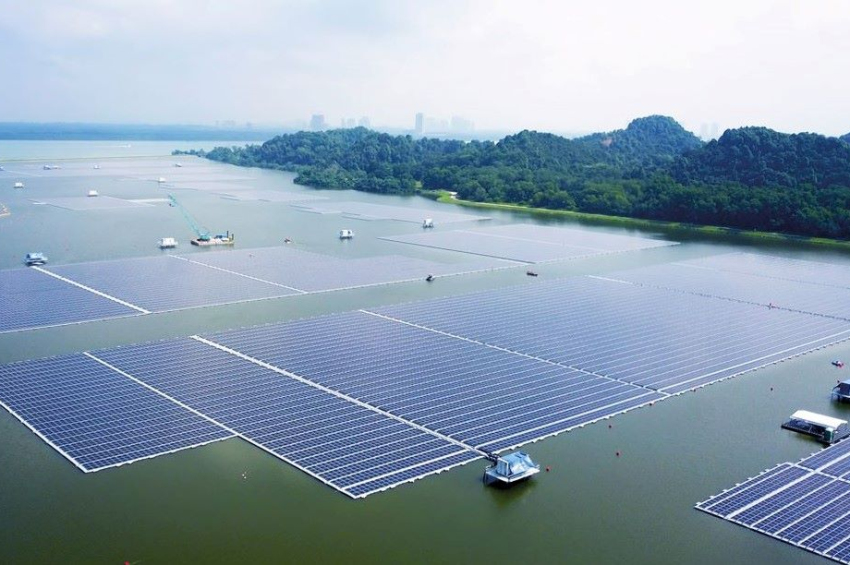Floating solar panels set to revolutionize energy production landscape
Imagine a future where solar panels not only provide clean energy but also help combat climate change without the need for vast expanses of land. This vision is becoming a reality with the emergence of floating solar panels, designed to rest on reservoirs and unleash the potential for renewable energy on a massive scale, as suggested in a study published in the Nature Sustainability.
Traditionally, solar power claims substantial land resources, but by utilizing the surface area of reservoirs, we can tap into a new energy source that could supply up to one-third of the world's electricity. The beauty of this solution lies in its ability to maximize space, freeing up valuable land for other vital purposes.
Furthermore, these reservoirs are typically near urban centers, making the distribution of electricity more efficient, according to the authors - a team of researchers from Chinese, European, and US scientific institutions.
But the benefits don't stop there.
Floating solar panels also tackle the issue of water evaporation, particularly in arid regions where solar power thrives. By shielding the water from the Sun's rays, these panels significantly reduce evaporation while capitalizing on the cooling effect of water vapor.
This dual advantage not only conserves millions of tons of precious water but also optimizes panel performance, resulting in even more power generation.
Until now, the global potential of floating solar power has remained uncertain, limited to individual countries or regions, and the new study has shed light on the magnitude of this innovative approach. Combining extensive reservoir databases, advanced modeling techniques, and regional climate data, the researchers have unveiled an astounding revelation.
More than 114,000 reservoirs covering more than 556,000 square kilometers were analyzed for the study.
Their findings demonstrate that floating solar panels could supply between 20% and 50% of the world's electricity needs, while simultaneously saving almost 10 trillion cubic kilometers of water from evaporating. Even with a conservative estimate of covering only 10% of a reservoir's surface, floating solar power has the potential to generate an impressive 4,356 terawatt-hours of electricity annually.
In the best-case scenario, by utilizing larger arrays on biggest reservoirs, this capacity can soar to 11,012 terawatt-hours, nearly half of the world's electricity consumption.
More to read:
What is regenerative battery and why it’s better than lithium-ion ones
The study reveals that certain countries, such as the United States, China, India, and Brazil, stand to gain the most from this revolutionary approach. In fact, as many as 6,256 cities worldwide could meet all their electricity demands through floating solar power. From small towns to bustling metropolises, the possibilities are boundless, with up to 150 cities boasting populations exceeding one million people.
While this research underscores the immense potential of floating solar panels, challenges remain. Deployment costs for these panels are higher compared to their land-based counterparts, and concerns persist about their impact on reservoir ecosystems by blocking sunlight.
Nonetheless, as the urgency to scale up renewable energy production grows and available land for solar installations dwindles, transforming reservoirs into power stations may prove to be a game-changing solution.



![[video] Honda successfully tests a reusable rocket prototype](/news_img/2025/06/18/news1_mediu.jpg)



